
This article is about the Ayer Society, of the Field Museum, and the honeybee breakfast #315Z, held for members at the Cheney Mansion, in Oak Park, Illinois. Written by artist and United States Navy Veteran, Stephen F. Condren, BFA-SAIC, of Condren Galleries, a Fine Arts Gallery ~ the rendering is done first as a pencil sketch, then followed by the finished work of art, which comes with JPEG & PDF scans for making prints, note cards, and stationery. Congratulations Ayers Society!
Posted on Google+, Facebook, Twitter, Linked-in, and Tumblr.
Field Museum Thanks Donors
The Edward E. Ayer Society, the planned giving society of the Field Museum, graciously host a “Thank you” breakfast.
Cheney Mansion
Modern And Contemporary House
A case has to be made, and in the favor of Charles E. White Jr., the architect of this fine home. This home, ladies and gentlemen is a modern house. This house was build in 1913 when the Model “T” Ford ruled the road. At this time the wealthy were building houses like the “Breakers” in Newport, and “Mara-Lago” in Palm Beach, all of which were designs of a bye-gone era. However, this house is a modern state-of-the-art home with a vision of the future.
Architectural Details
What makes this magnificent house so excellent is its use of ornamentation. There are no frills and ostentatious decorations, none at all. The stone masonry on the house is used as an accent rather than a style. Here we are not being thrown back to “Queen Anne”, “Tudor”, or “Norman”, rather, we are being firmly brought into the now! There is something very “Mies van der Rohe” about this home. Just look at how clean the lines are, and how well proportioned the central block of the structure is. This home is amazing!
Oak Park, Illinois
There is no room in this article to give the proper perspective on the historic city of Oak Park, Illinois. The home of Ernest Hemmingway, Frank Lloyd Wright, and Mary Agnes Yerkes. There are at least 25 homes designed by Frank Lloyd Wright in Oak Park, which is the world’s largest concentration of his homes. The beauty, charm, and history truly make Oak Park, Illinois one of the greatest towns in the United States of America. Thank you!
Speakers Of Note
James Louderman
Mr. Louderman has been a veteran of the Field Museum for over 20 years and a leading authority on insects. He is responsible for the over 17 million species of insects in the Field Museum collection. While we were in the Library, James introduced to us his best friend “George Burns”, the Field Museum staff turtle (we are, of course, celebrity status). Also, after we were introduced to George, he gave us a delightful introduction to a box of black beetles, that were crawling all over his hand. James assured us that they cannot get out of the box because they cannot crawl on the plastic sides of the box which is completely open at the top, trust me, they really knew how to crawl. There were many interesting, live garden favorites on display in the Library, but on the top of my list was a very large, black, harry tarantula. After all, what party isn’t complete without a live, air-breathing tarantula to showcase the “live” entertainment? He looked just grand behind glass, and that is were he stayed!
Charles Reudebusch
Mr. Ruedebusch is the owner of CR Gardens in Oak Park, Illinois. As an expert landscaper and horticulturalist, Mr. Ruedebusch has worked for the Forest Preserve District of Cook County, and was also the senior gardener of the Cheney Mansion. Since Mr. Reudebusch is fluent in German, we both had a good time bantering in German after the lecture. Mr. Charles L. Katzenmeyer was standing and conversing with us as we talked about the German language. He shared with us that his mother learned German in later years and really took to it, so now he wants to learn as well. I have so say that the caliber of people gathered at this fine event were all about learning!
Charles L. Katzenmeyer
A special thanks to Mr. Charles L. Katzenmeyer, Vice President of Institutional Advancement, for sponsoring and overseeing this fine event. Mr. Ketzenmeyer was diligent in making sure that all things were in order and that everyone was well tended. With the Field Museum you can always expect the best, and they deliver more, by providing Education, History, and a revolving door to the Community. Honesty, can you imagine life without the Field Museum? Thank you!
The Breakfast
On Saturday morning, at 8:30 AM, members of the Edward E. Ayer Society, of the Field Museum, were give a most gracious and elegant breakfast. Not only were we given a gracious meal, we were escorted around the grounds by experts on horticulture on the grounds of the Cheney Mansion. After the tour, we were provided with a very educational and most enlightening talk about bees, wasps, and other loving creatures of the garden. All in all the event ended at about 11:30 AM.
As we arrived we took our name tags and attached them to our lapels and then were graciously escorted to the out porch adjacent the morning room, on the south end of the mansion, overlooking the southern lawns and gardens. After a proper introduction from Anne, director of staff, we all alighted to be served at the buffet. As always, being with fellow Ayer Society members is a good time.
Garden Tour
After the breakfast, where we were each given a jar of honey, we proceeded outside to the gardens to have a private and detailed account of the plants and insects in it. This was really a delight and both Mr. Louderman and Mr. Ruedebusch were very knowledgeable and able to answer all questions asked of them.
Lecture
Following the garden tour, we were then lead into the house, the former living room, and there was finely appointed seating arrangement for a talk on insects by both Mr. Louderman and Mr. Ruedebush. The lecture was about 45 minutes in length, and they had everyone totally engaged!
Educated Donors
During the course of the lecture, many of the members asked very good and cogent questions of Mr. Louderman and Mr. Reudebusch. My favorite point was to learn that only female mosquitoes sting, not males! Also, if you bet the head of a male Bumble Bee he will salute you! However, beware, if you do that to a female she will sting you! Ouch or Amen?
125 Moments
As a further gesture of gratitude the Field Museum gave each of us a personal edition, with our name on the cover, of the new publication from the Field Museum: 125 Moments in the Natural History of the Field Museum. This scholarly and erudite edition, on the history of the Field Museum will go immediately into my library!
Thank You!
Dear Mr. Wilbur H. Gantz, Board Chair, Dr. Richard W. Lariviere, President and CEO, Members of the Board of Directors, the Administration, and the Staff off the Field Museum, I know that I am speaking for everyone that attended by saying thank you so very much!
New Book ~ Front Cover

New Book ~ Back Cover

Invitation

Invitation Inside Panels

Photographs

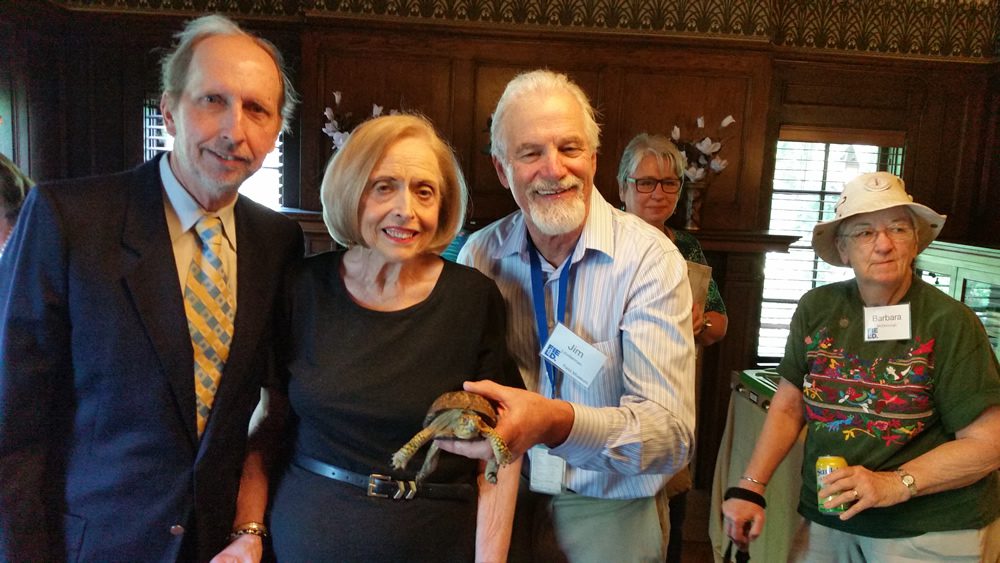
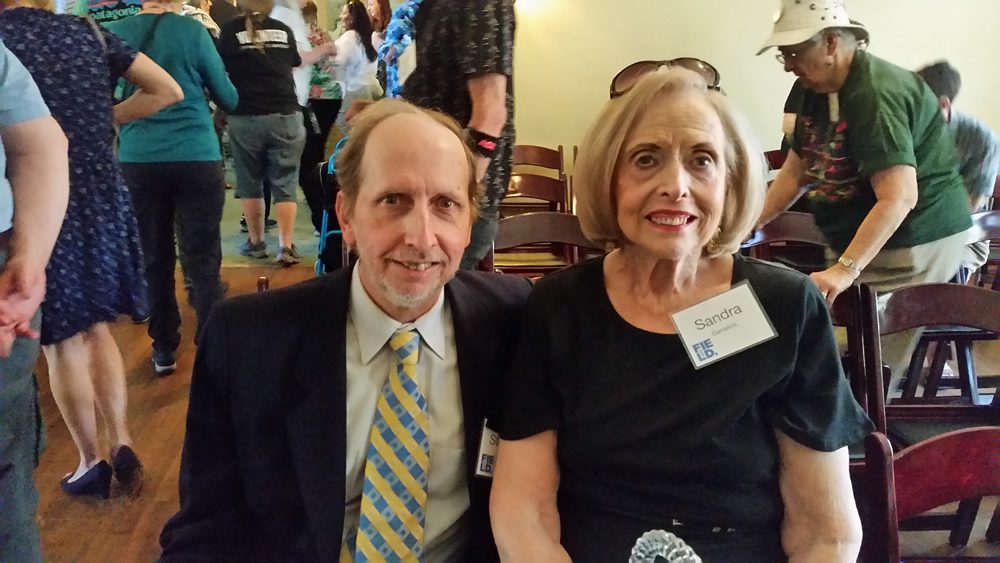
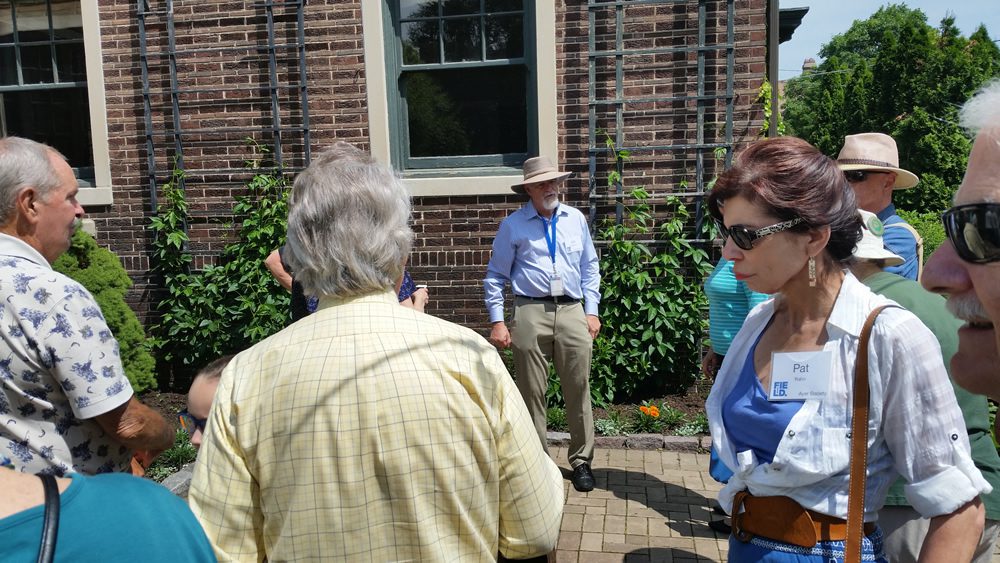
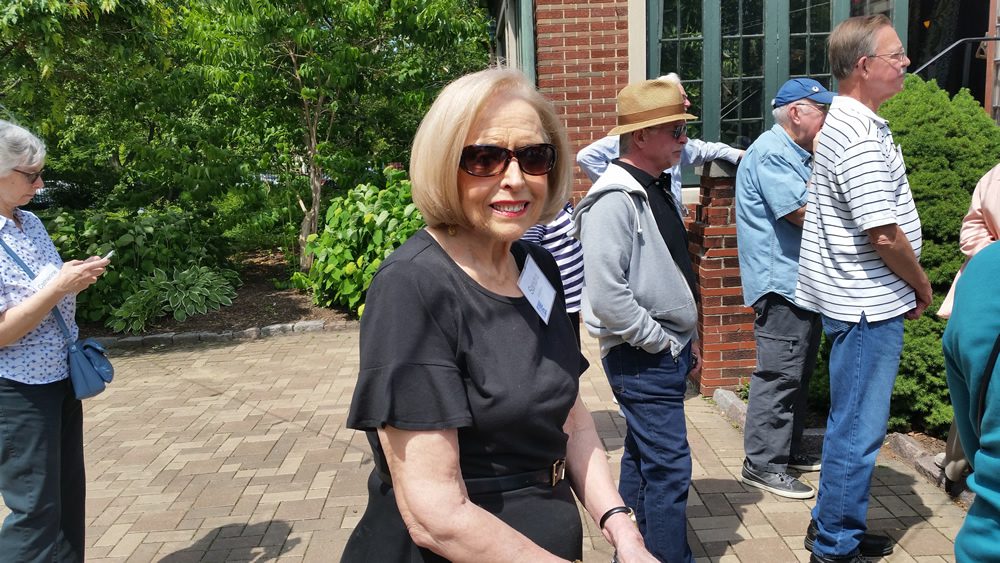
The Mansion
Below is the main entrance of the Cheney Mansion as seen looking east on Euclid Avenue. On the far left is the Library. At the Center is the Vestibule & Entrance Hall. To the right of the entry are the windows of the Living Room, or Parlor. To the right of the Parlor is the Breezeway. This area is used for receiving guests and then escorting them to the Morning Room, or to the Terrace for tea and light refreshments, depending on the social context.
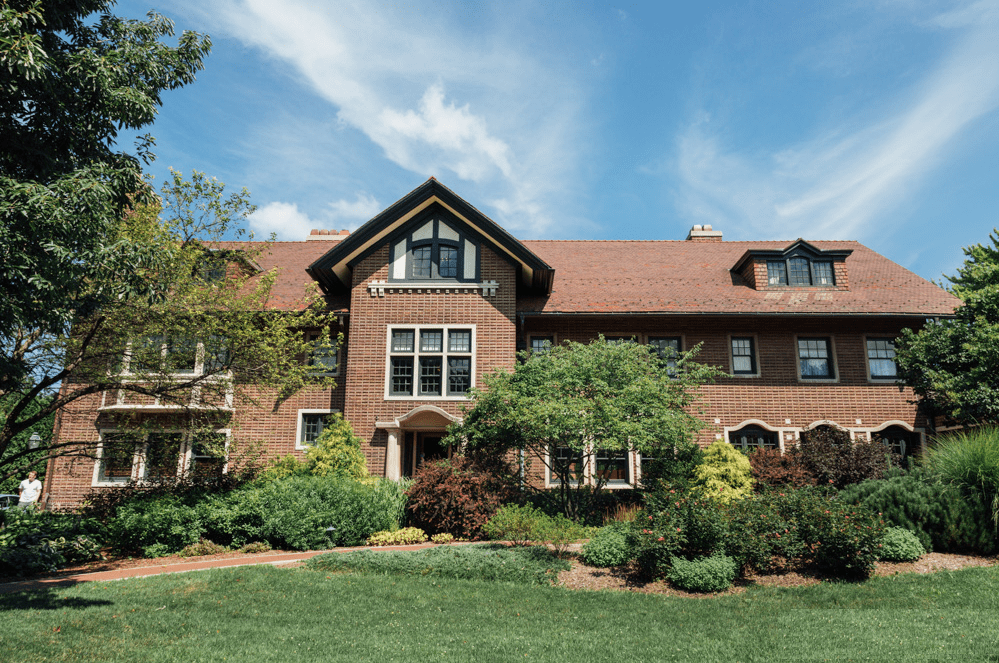
Terrace
The enclosed Terrace, which is at the very south end of the structure is to the very far right in the photo, of which you can barely see the north wall. The Terrace was popular in the summer as it has a commanding view of the south lawns and gardens. Further, it gives access to the Greenhouse, and the back yard court.
Terrace Enclosure
In the vintage photo of the Cheney Mansion below, if you look carefully to the far right, you can see the south façade of the house, with the window of the Breezeway clearly seen. This now has been removed to make way for the enclosure of the Terrace that overlooks the south lawns and gardens. The new addition or structure is designed to be a year round extension of the Breezeway. Thus in the summer you can open the large French windows and take in the spectacular views of the property, and during the winter you can close the windows and turn on the heat so as to entertain in comfort.


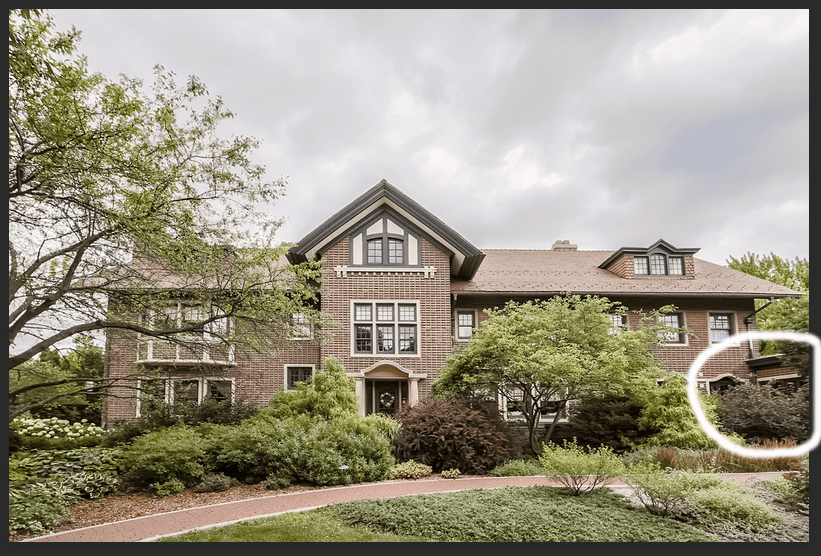
Jackson Park Highlands
As you can see from the photos below of my childhood home in the Jackson Park Highlands, is very similar to the Cheney Mansion. This is why I feel so at home here, for it is almost a replica of our home in the Highlands, only larger in scale. Our house and the Cheney Mansion were both built in 1913, and were of the new era of electricity in homes. Prior to this all homes were built with gas lines for gas lighting. With the age of electric light the rooms of homes were much larger. Thus the very large Ballroom in the Cheney Mansion, and other fine homes of this era.
Property Lots
Our house was long on the lot rather than wide. This is due to the fact the our garden lot to the north was sold of right after the World War I. This was a common practice in many cities, Oak Park included. Thus the house that you see to the left in this photo below should not be there, but rather our garden. Our house is 4,500 sq. ft. with no ballroom. If you look closely in the photo below, to the right of the house, you can barely see the main entrance with a copper canopy over the steps. As you can see from the photo below, the Morning Room is in the front of the house adjacent the Dining Room.
State-Of-The-Art
Like the Cheney Mansion, our home was a modern, sober, state-of-the-art house! However, what was fortunate with our house was that it was smaller is scale, and thus less expensive to build. Therefore, our house was replete with the very finest appointments. The Vestibule which you can barely see on the far right is paneled in marble, and to the left there are large mahogany and glass panels with window panes looking into Grand Entrance Hall. All of the door nobs in the house were crystal except for the vestibule, which were a decorated porcelain.
Progression To Modern Architecture
In the photograph below on Bennett Avenue, in the Jackson Park Highlands stand three homes that give us a perfect sample of the change from retrograde to modern living. In the house to the right is a very retro house with Gothic overtones, truly, we are looking backwards. In the middle we have the advent of modernity with a clean cut modern home embellished with just enough detail for accent, note the Tudor entry. This is the same period as that of the Cheney Mansion, which bares Tudor elements as well. On the left is a contemporary home, though a bit dated, it makes my case.
Out Of The Darkness
We really have to appreciate what we are looking at here. For in 1913 we are virtually coming out of the darkness. We have gone from candles, to gas, to electricity in a generation! All that they knew back then was how to look back, and they did not know how to properly integrate the new technologies into the “New wine skins” of modern architecture, to put it Biblically. The Cheney Mansion era was the first era to offer electricity in the home, they were pioneers. Remember, that all of this was before Mies van der Rohe’s Barcelona Pavilion that forever changed the world in 1929.
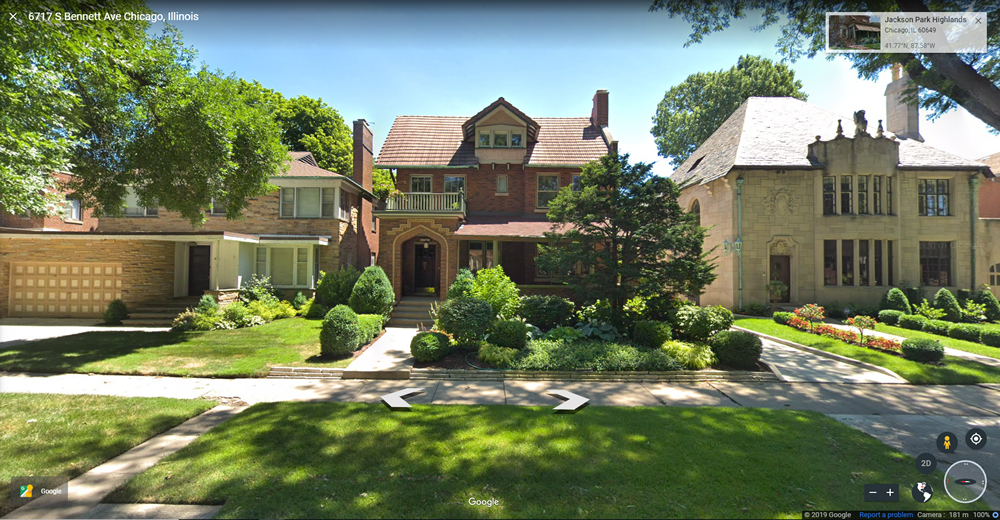
The Barcelona Pavilion

Gordon Sherman House (Midas Muffler)
Does this house look familiar? The front door is directly from the Cheney Mansion, or is the Cheney Mansion front door front the Sherman house? I do not know the date of the Sherman house, but the Jackson Park Highlands was chartered in 1905. This house on Bennett Avenue in the Jackson Park Highlands, was owned by Gordon Sherman, the President of Midas Muffler. His father, Nathan Sherman, Chairman of the Board, lived directly across the street from us on Bennett Avenue. We see again the birth of a modern home, with a touch of the Tudor in the gables. Notice how the window encasements and brick work are so similar to the Cheney Mansion.
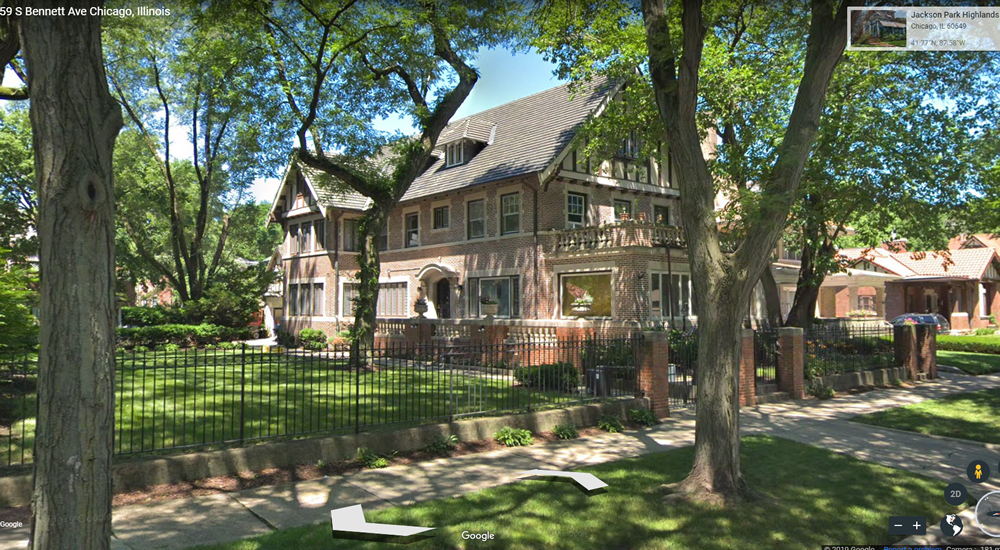
Wood Paneling
The house was wood paneled throughout, in every room, even in the large Game Room. On the vast ceilings there are two 30″ wide polished wood beams, that were 3″ thick, and that spanned the width of the Grand Entrance Hall, Living Room, and Dining Room, with thick ceiling molding of mahogany all around. Further, in the Dining Room a massive mahogany buffet was built right into the wall, and part of the structure of the house, under the stained glass window! The Library and Game Room were also paneled, but no large beams spanned the ceilings like in the public rooms.
Hearth
The hearth is not magisterial as that of the Cheney Mansion, but has a fine mahogany encasement. The wood work in our house was amazing. No costs were spared to make the inside as elegant as the outside.
Biltmore
It is my thinking that like “Biltmore” in North Carolina, all of the expense of the Cheney Mansion was put on the magnificent exterior and gardens. The inside of “Biltmore” is really more of a casual country house, and nothing like the formal, and ostentatious giant that commands you almost to grovel down as you approach it. This is all because George Washington Vanderbilt had a fixed amount of capital to work with, and did all that he could to make his farm self sustaining.
Interior
He could not afford to lavishly finish the interior of the house in the same demanding detail that he did with the outside. So seems to be the case with the Cheney Mansion, with so much spent on the property and the vast scale of the house, there had to be a point of yield. Therefore, there is no marble, and little wood paneling on the interior of the home, with the exception of the Library, just like at Biltmore.
Alcove
Also, like Biltmore the Alcove with the hearth in the Living Room is a key focal point, taking more funds from the interior design. All in all this is a most resplendent home, and is to be cherished and preserved, for this house gives all of us a vision to the future. Certainly, there is no other house anywhere in Chicagoland built on a scale like this one.Also, remember this is a city house, not a Lake Forest estate, which makes it all the more amazing!
The Morning Room
A side note regarding the Cheney Mansion Morning Room. It is always standard practice to have the Morning Room adjacent the Dining Room because it has access to the Kitchen for service. This clearly is the case with our house as seen below, for the Morning Room is in front of the house, which is in front of the Dining Room, which in turn is adjacent the Kitchen. In the Cheney Mansion the Morning Room is adjacent the Breezeway which comes off of the Living Room not the Dining Room.
Location
If that were the case the Morning Room in the Cheney Mansion should be beyond the Dining Room with entry from the Entrance Hall. However, I believe that the first owners wanted the Morning Room and Terrace to look to the south lawns and gardens, thus putting the Morning Room adjacent the Living Room.
Services
Also, since there is an alley just to the east side of the home, as it is positioned back against the alley to maximize the front lawns, there is no room on the east side of the house beyond the Dining Room, thus there is no space to build on the east side of the house. The downside of the current location of the Cheney Mansion Morning Room is that it does not have services of the Kitchen.
Had they simply turned the house 90 Degrees to the right this would have solved the problem, but that would entail cutting the property in half, the house in the center, the Morning Room and Terrace facing south, and the front lawns facing north. However, this is a radical landscaping design and inferior to the current layout. Thus, they compromised the Kitchen access to the Morning Room and Terrace in favor of the fabulous south lawn and gardens. A wise choice in the overall scheme of things.

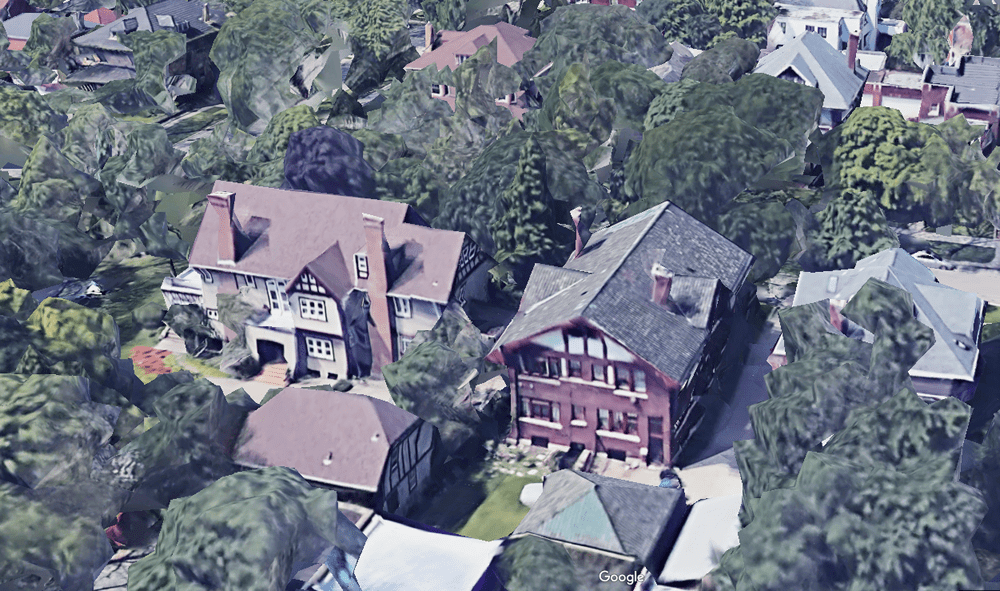
Similarity Of Architecture
Both houses were designed by noted architect, Charles E. White Jr. (who worked with Frank Lloyd Wright). Notice the similarity of the architectural design between our house (above), in the Jackson Park Highlands, and the Cheney Mansion (below), even the same Tudor stucco pattern on the third floor, it is striking! Like Mrs. Robert’s house, the large Tudor house just to the left, we had our garden lot adjacent the structure, in our case the Lemonthal’s house to the right in the photo above, now rests on that lot. Mrs. Robert’s house, like the Cheney Mansion, is positioned wide on the lot, with an expansive view of the south lawns and gardens.
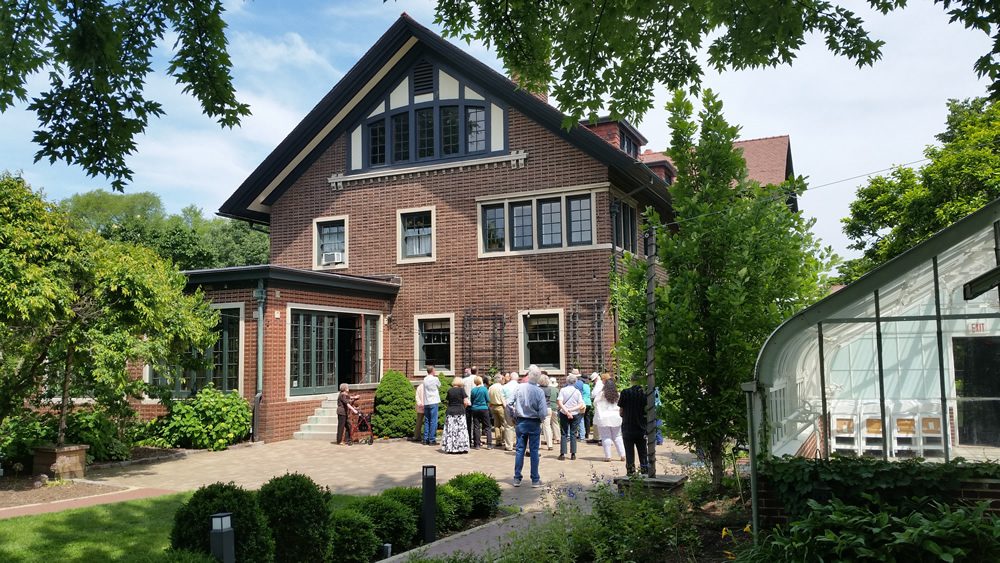
Back Yard Court
The two windows just above the group gathered, listening to James Louderman talk on flowering vines, are to the Morning Room. To the left is the enclosed Terrace, which was a later addition to the mansion, as discussed in the vintage photos above. This is where we had our “Honeybee Breakfast”. As a rule, most Morning Rooms face south and over look a garden or scenic street view. Of course, lot location and positioning of the dwelling on the lot are major factors in placing the Morning Room.
The point is, that the Morning Room is the most used room in the house and where you receive most of your guests. Thus you want to maximize the views from the Morning Room. In the case of the Cheney Mansion, the southern gardens and lawns are the undisputed choice.
All Day Room
The Morning Room was for fall practical purposes, “The all day room”, because this room is used for entertaining friends, family, and neighbors all during the course of the day. The Living Room was rarely used as it was strictly formal, and used only for special company and events, and used only in the evening. Hence the name “Morning Room”.
The pulse of activity in the house was in the Morning Room, The Dining Room, The Breezeway (Alcove), The Terrace, and the Library. The Bedrooms were, of course, for retiring, and the Kitchen was utterly banal, never shown to, or seen by anyone.
All dining: morning, noon, and evening was in the Dining Room. Only tea and finger sandwiches were ever served in the Morning Room, or in the Library. The Ballroom, of course, was used for large scale events, that included, but not always, dancing. There is a stage in the Ballroom for the musicians to perform, for this was an era before radio, television, and the like.
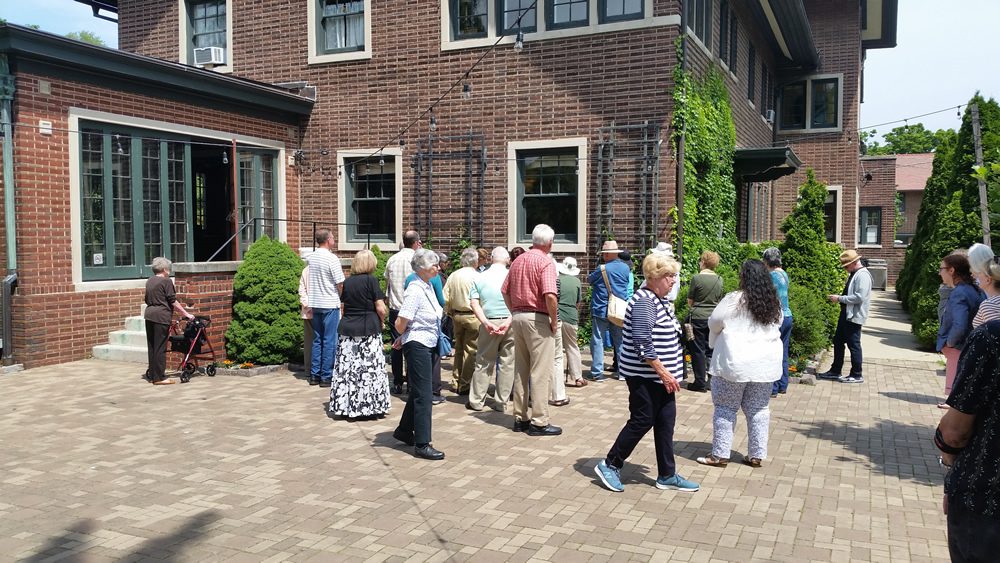
Enclosed Terrace
View of the enclosed Terrace, which gives a gracious view of the south lawns and gardens. You can see from the color of the brick that the enclosed Terrace was made into a whole new room. The brick is newer in appearance and as a deeper tone of red, this matches the staircase as well.

The Ballroom
If you look up to the third floor you can see the window encasement that illuminates the Ballroom. If I am not mistaken I believe that Professor Plumb did it, with the candlestick, in the Ballroom!
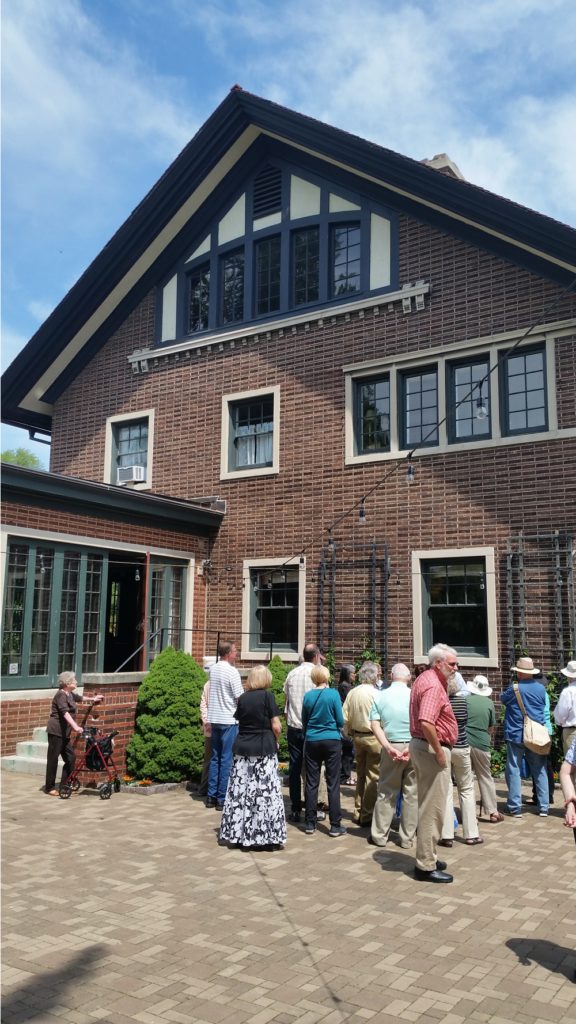
Grand Staircase
As we did not have access to the Ballroom we will have to be content with the exterior view of the windows. However, I do know that the area of entertainment in the Ballroom is on the south side of the space. The northern section of the third floor is used for service. The area is partitioned by the Grand Staircase.
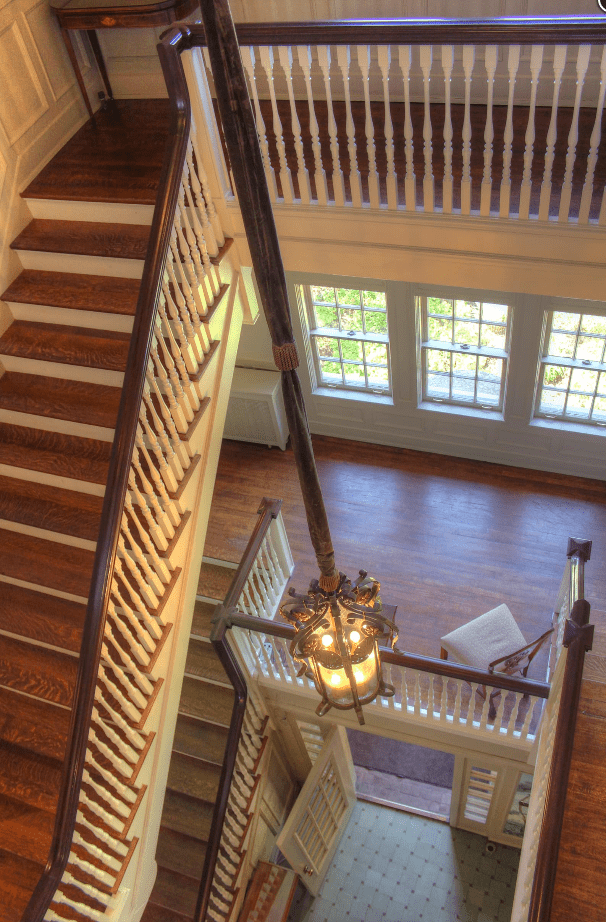
The Backyard Court
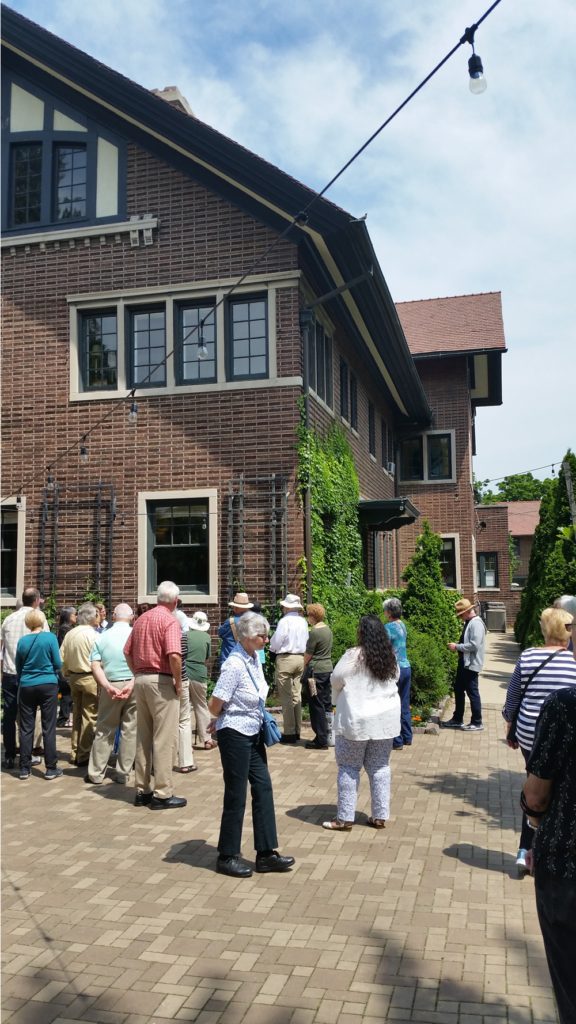
Scans
- JPEG & PDF
Scans of honeybee breakfast #315Z are available in JPEG or PDF formats for making prints, note cards, or posters.
Condren Galleries Ltd. For Honeybee Breakfast #315Z
Honeybee Breakfast #315Z As Fine Art
- Fine Arts Gallery
Condren Galleries is pleased to have been to participate in the execution of honeybee breakfast #315Z.
Stephen F. Condren For Honeybee Breakfast #315Z
Honeybee Breakfast #315Z As Photographic Art.
- Artist
As an artist I have made honeybee breakfast #315Z a staple of my rendering art.
Alt Image Tag
Honeybee Breakfast #315Z with prints by artist Stephen F. Condren at Condren Galleries.
Related Links
James Montgomery House #265Z

